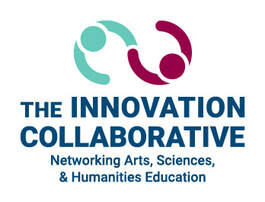 By Juliana Texley, Innovation Collaborative Board Member and former President, National Science Teachers Association It often takes a major event to upset the status quo and for real change to occur. The U.S. Department of Education issued its first Star Schools grants to improve and evaluate online education in 2000. While the potential of online systems was clear twenty years ago, very little innovation occurred in the pedagogy until this year. In March 2020, schools across the nation were suddenly shut down and teachers had to adopt new methods almost overnight. Educators across the globe reached for skills and methods that they never thought they would need. Best practice couldn’t simply involve readings and worksheets or lectures via Zoom. Innovation happened! For this issue of the Innovation newsletter, we surveyed to find suggestions and links for a program near you. Talk Isn’t Cheap At the most basic level, nurturing innovation online begins with communication skills. That original Department of Education study twenty years ago emphasized two important elements of online interactions—open collaboration and creativity. Those elements are being reintroduced today in the best programs. One of the key ideas that teachers then and now recognize is summarized by Sharon O’Malley¹. Online discussions should be between students, not teachers and individual learners, she points out. What seems logical is, in truth, a tremendous challenge when a teacher moves from face-to-face to asynchronous online dialogue. Learning to “stop talking” online was one of the first changes teachers had to make as the transition occurred. Spatial Reasoning A second key principle of good online learning also included in O’Malley’s review, the intersection of science and the arts, is often spatial reasoning and how it is a skill that is both innate and learned. The online environment can be just as effective in discovering, manipulating, and developing spatial reasoning skills. Deborah Kris² shows that very specific methods can be incorporated to decrease gender gaps as well. Incorporating spatial reasoning tests, games, and building experiences into standard online courses can bring them to a level that could not be achieved in any other way. Unfortunately, it is awkward to incorporate spatial learning, art, and graphical analysis in many traditional online learning platforms. Therefore, the teacher may find it necessary to juggle not one but several learning management systems simultaneously. While these platforms may not be compatible, in the past several months teachers across multiple subject areas have demonstrated it is possible to deliver effective instruction through these strategies. Great Examples from the Arts and Physical Education Students today find online arts a motivational dimension of their shared experience. But it is still rare to see these skills woven into the fabric of science and social studies courses online. This is partially true due to the limited imagination of the programmers who develop the platforms. They might remember education as it was when they were students themselves, but they haven’t necessarily considered sites and apps that can be adapted for blended learning. When teachers make the effort, innovation enriches the at-home experience. Here are just a few examples of innovative resources:
______________________________ 1. O’Malley, Sharon. (2017). Effective Teaching Online. https://www.insidehighered.com/digital-learning/article/2017/07/12/7-guidelines-effective-teaching-online 2. Kris, Deborah Farmer. (2015). Can Teaching Spatial Skills Help Bridge the STEM Gender Gap? https://www.kqed.org/mindshift/43802/can-teaching-spatial-skills-help-bridge-the-stem-gender-gap
0 Comments
Your comment will be posted after it is approved.
Leave a Reply. |
